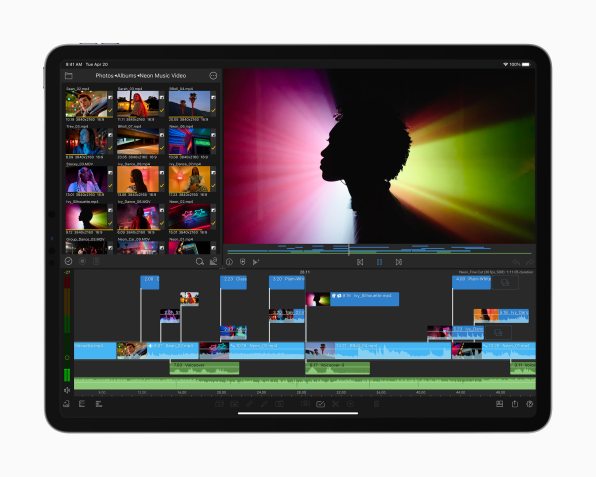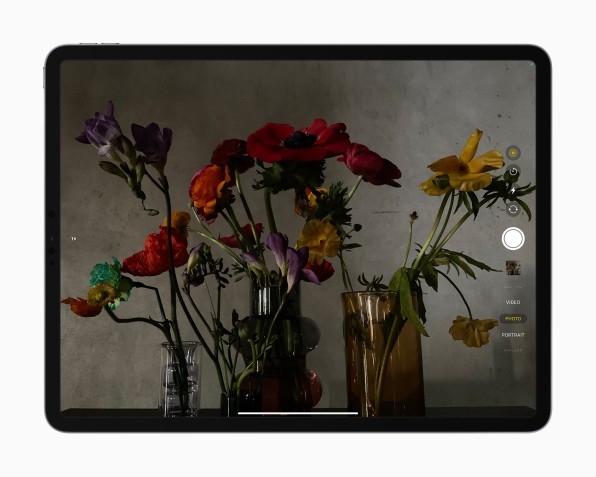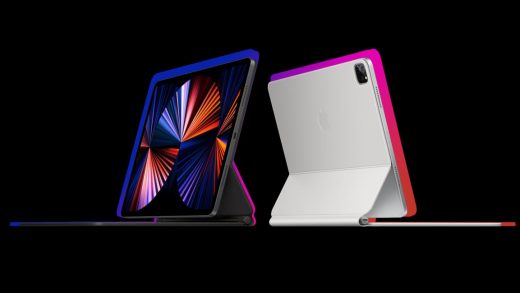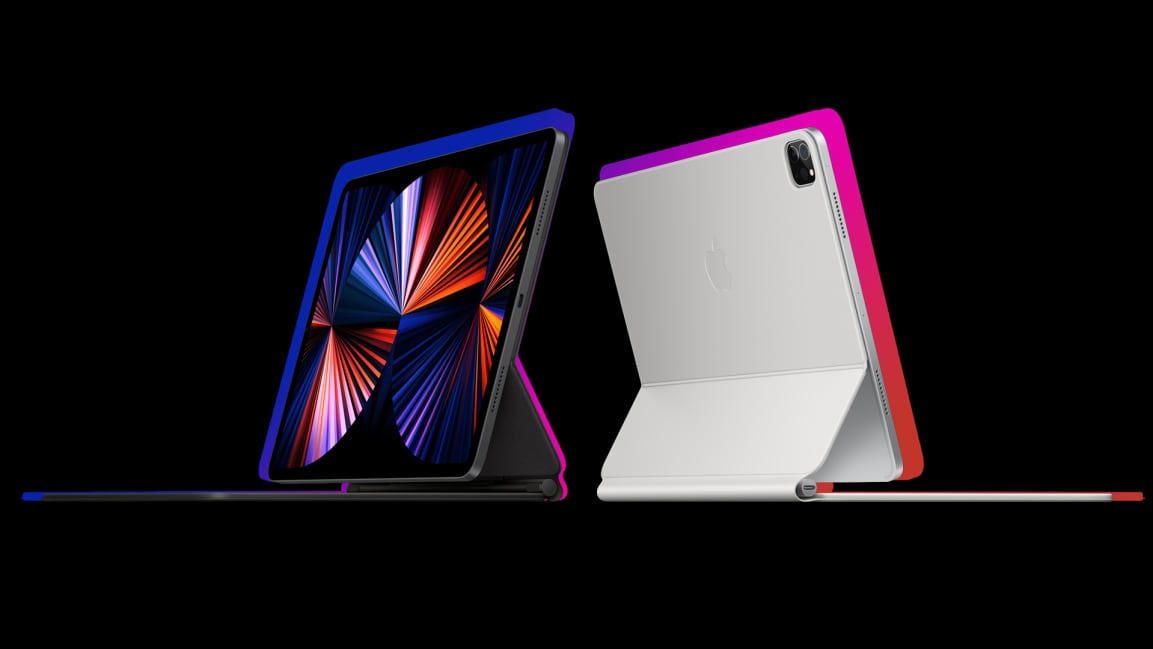The iPad Pro just got way more pro. Now it needs pro software
Apple is fond of declaring that the iPad Pro isn’t a computer. But at its “Spring Loaded” event on Tuesday, it unveiled new 11- and 12.9-inch iPad Pros that are so well equipped they could do a darn good impression of one.
The new models are built around exactly the same M1 chip that’s in Apple’s newest Macs. They’re available with up to 16 GB of RAM and 2 TB of storage, trouncing any previous iPad and matching a nicely appointed Mac. They’re the first iPads with Thunderbolt, a useful connectivity standard—long available on Macs—for industrial-strength tasks such as hooking up to a big display. Apple even says that the 12.9-inch model’s mini-LED screen rivals the one on the company’s $5,000 Pro Display XDR.
When Apple introduced the capable new iPad Air last fall, the difference between the iPad Pro and the rest of the iPad line shrank. Now, with these potent new Pro models, that gap just opened up again.

Apple clearly envisions the iPad Pro serving some of the world’s most demanding users. During Tuesday’s launch event, most of the applications the company referenced for the new models were heavy-duty tasks such as shooting movies, creating augmented-reality content, designing buildings, and editing vast quantities of 4K video. The kind of stuff, in other words, that people do for a living—and for which no tablet is yet the most obvious mainstream choice.
But while Apple’s hardware strategy for making such folks happy seems to be a smashing success, the software side is as murky as it’s ever been.
Ideally, a device’s software and hardware become so symbiotic that you stop thinking about the distinction between them. Over Apple’s long history, it’s achieved that state of zen more often than any other company. However, the iPad—at least in the iPad Pro era—has yet to reach it. The platform consists of remarkably advanced hardware running an operating system and apps that lag in sophistication.

To make the disparity even more obvious, new iPads don’t follow the dependable, synchronized release schedule of iPhones, which show up in the fall running a newly minted version of iOS. Buy one of these iPad Pros upon release, and you’ll probably be a bit antsy waiting for iPadOS 15—which, even if you’re brave enough to install a beta or preview version, is months away from availability.
Why is iPad Pro hardware so much more pro than iPad Pro software? I have a few theories:
Operating systems are hard. iOS, iPadOS, macOS, WatchOS, tvOS—Apple is now responsible for so many platforms that pushing all of them forward every year with equally beefy upgrades is impossible. The company’s 2019 decision to rebrand the iPad’s OS as iPadOS seemed to be a commitment to more ambitious, iPad-centric software updates. But last year, the needs of the iPhone—such as new Apple Maps features—seem to have gotten most of Apple’s attention. It still feels like the iPad only gets a truly major software upgrade every other year.
The iPad wasn’t always pro. Back in 2010, Apple gave us a tablet designed for casual tasks such as browsing the web, enjoying photos, and watching movies. For many people, those are still an iPad’s primary purpose. It’s tough to keep things simple and approachable while simultaneously introducing features craved by power users, such as making it easy to multitask several apps on one screen. Apple has made progress on reconciling such matters, but it hasn’t broken entirely free of its original, more limited conception of what the iPad should be.
The App Store’s business model isn’t pro enough. The best iPad apps are remarkable, but the App Store—where even a measly $10 price tag is taken by many as gouging—isn’t conducive to the sustained effort required to build full-blown, professional-caliber apps. Some developers turn to subscription pricing to deal with that conundrum, but that’s resulted in too many products that should really be one-time purchases asking users to pay up every month—also not ideal.
There’s too little agreement about how a pro app should work. The interface consistency that’s always been a strength of Macs has never fallen into place on the iPad. Major developers of ambitious iPad apps such as Microsoft, Adobe, Google, Serif, and Apple itself have entirely different theories on fundamental issues such as how you open a document and where the settings are located. Just figuring out how apps work can degrade your productivity in a way that happens a lot less on other platforms.
I speak not as an iPad skeptic but as someone who—come September—will have used an iPad as my primary computing device for a decade, and happily so. I love the iPad so much that I want to see it live up to every iota of its great expectations. Every time iPad Pro hardware gets more powerful, those expectations ratchet up.

Having said all this, I remain a cautious optimist about the iPad’s future: It’s tough to believe that Tuesday’s great leap forward on the hardware front isn’t a prelude to major software advances. And we shouldn’t have to wait long to find out.
On June 7, Apple’s virtual WWDC developer conference will kick off, presumably with a keynote that includes a preview of iPadOS 15. The new iPad Pros might have 75 times the CPU performance and 1,500 times the graphics performance of the original 2010 iPad, as Apple bragged this week—but it’s the next software upgrade that will say the most about where this platform is headed.
(31)



